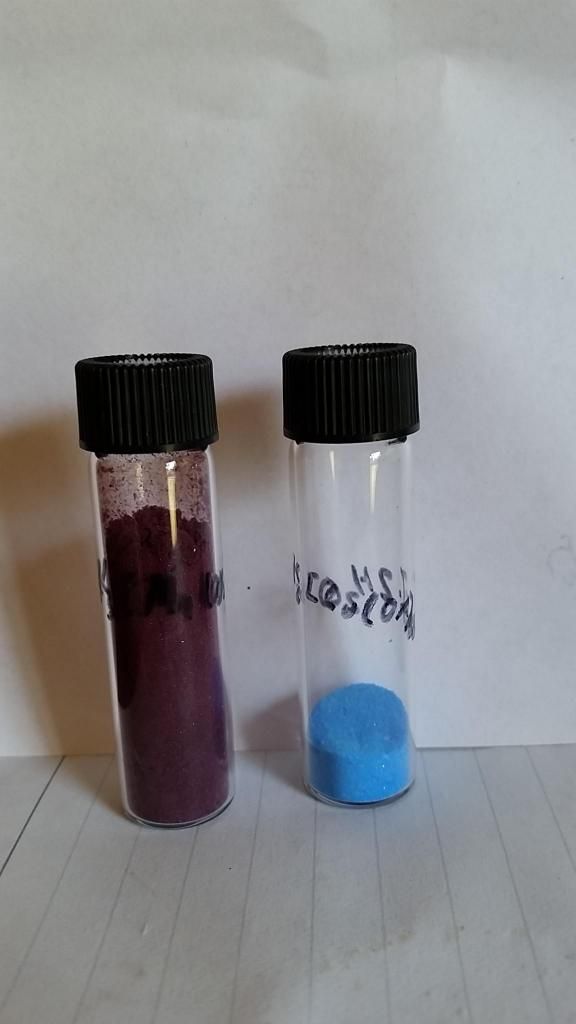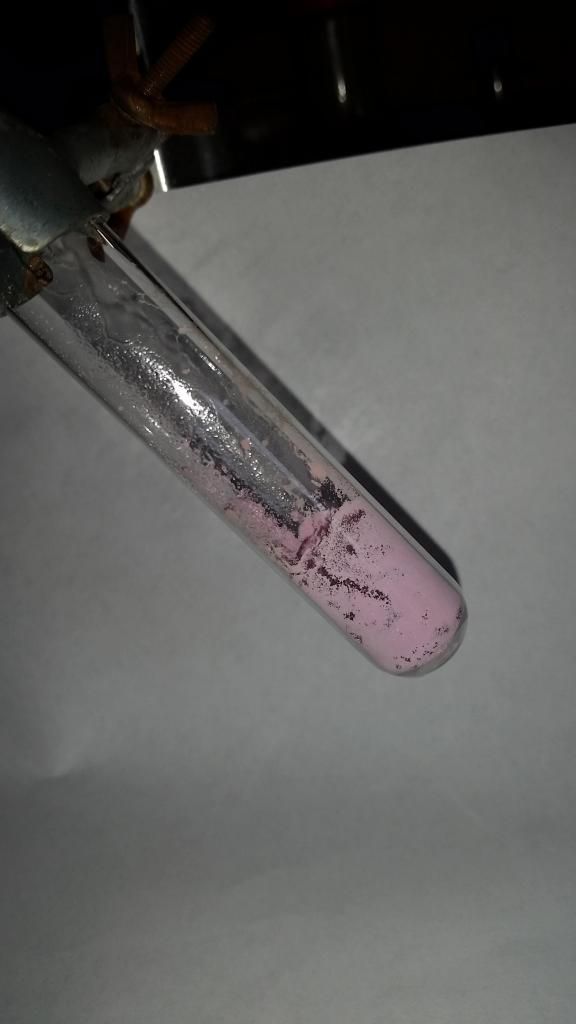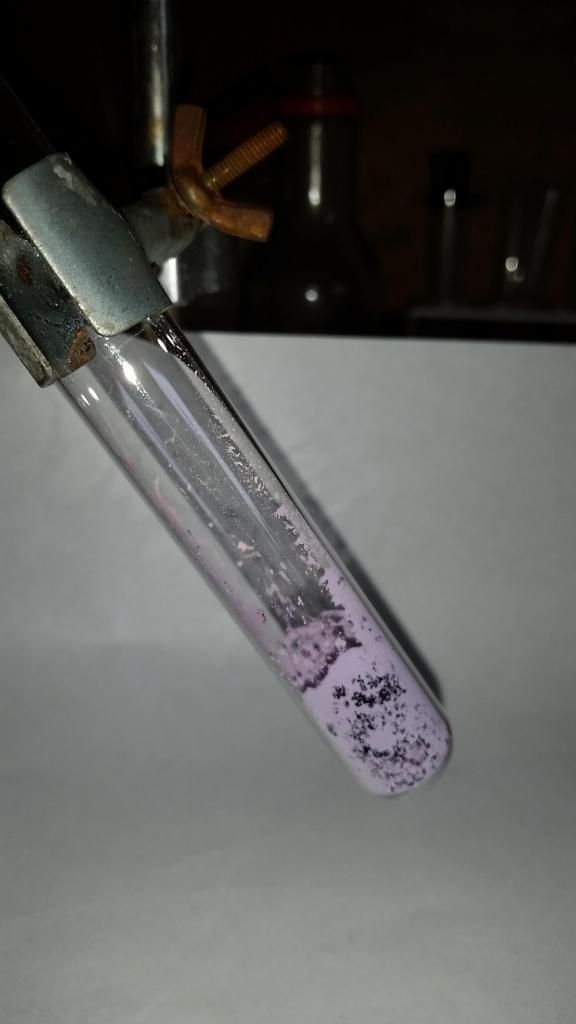

Quote: Originally posted by Brain&Force  |
Quote: Originally posted by woelen  |
Quote: Originally posted by woelen  |
Quote: Originally posted by bismuthate  |

 )and reduced to cobalt (II) and
destroys the potassium trisoxalatocobaltate(III)
)and reduced to cobalt (II) and
destroys the potassium trisoxalatocobaltate(III) ) and destroys the potassium
trisoxalatomanganate(III) compelx,but it is more easier to make manganese complex comparing too cobalt
) and destroys the potassium
trisoxalatomanganate(III) compelx,but it is more easier to make manganese complex comparing too cobaltQuote: Originally posted by Praxichys  |
Quote: Originally posted by thesmug  |
Quote: Originally posted by DraconicAcid  |

 ). Peroxide worked slightly I could see a green tint for a few seconds but after a
while all Co(III) was reduced to (II). I ve done this complex like twenty times since first synthesis. If you want to get high yield you have to do it
as quick as plausiable (the best way is to chill solution in fridge for like 15-30 mins and then filtrate).
). Peroxide worked slightly I could see a green tint for a few seconds but after a
while all Co(III) was reduced to (II). I ve done this complex like twenty times since first synthesis. If you want to get high yield you have to do it
as quick as plausiable (the best way is to chill solution in fridge for like 15-30 mins and then filtrate). 

 (dont be suprised if your solution will be
very intense dark green in colour almost black
(dont be suprised if your solution will be
very intense dark green in colour almost black  )
)

 (are you interesed in seeing more or
less identical graph or should I use raw reflectance data instead?!?!)
(are you interesed in seeing more or
less identical graph or should I use raw reflectance data instead?!?!)
 ) and when reaction mixture was 2C 0,24 grams of KMnO4 was
added. Solution turned red and was passed through Büchner funnel with a sintered glass disc. Eluate was collected and treated with 35 ml of ice
cooled ethanol and placed in freezer. After 45 minutes when no precipitate was observed excess of ice cold ethanol was added until the precipitate
crystalize out. Precipitate was obtained by filtration through Büchner funnel with a sintered glass disc flushed earlier with a couple HCl drops.
Precipitate was flushed with cold ethanol then cold acetone and was left to dry in a DARK place.
) and when reaction mixture was 2C 0,24 grams of KMnO4 was
added. Solution turned red and was passed through Büchner funnel with a sintered glass disc. Eluate was collected and treated with 35 ml of ice
cooled ethanol and placed in freezer. After 45 minutes when no precipitate was observed excess of ice cold ethanol was added until the precipitate
crystalize out. Precipitate was obtained by filtration through Büchner funnel with a sintered glass disc flushed earlier with a couple HCl drops.
Precipitate was flushed with cold ethanol then cold acetone and was left to dry in a DARK place.



